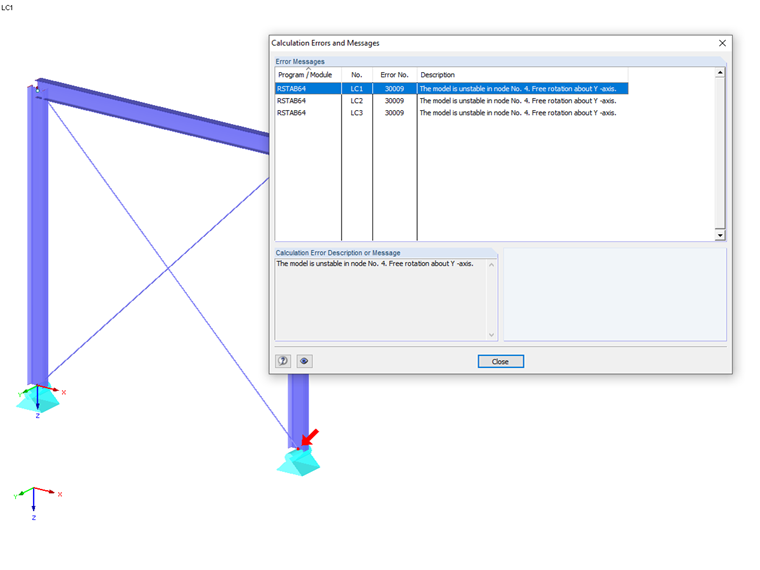Other causes of unstable models are failing supports or foundations. For example, the system of a building with support or foundation failure usually becomes unstable when calculating wind load cases. You can avoid this error by always calculating the individual load cases together with the self-weight in one CO, not separately.
Overly soft systems can also cause instability in a CO. If the load for the specified cross-section/surface thicknesses is so large that the program cannot find equilibrium in the deformed system, a calculation error occurs.
You can check this by setting the calculation type to "Geometrically linear static analysis" for the problematic CO under "Calculate" → "Calculation Parameters" → "Load Combinations" tab. The deformation according to the geometrically linear static analysis itself is usually too big, and the dimension of the elements has to be increased.
If instability occurs despite compliance with the points specified above, the cause is probably modeling errors. In this case, click "Tools" → "Model Check" and check if there are identical nodes, overlapping lines/members/surfaces, or crossing unconnected lines/members. In the case of imported systems in particular, it often happens that the elements are unconnected due to rounding differences. You should also check the boundary conditions such as hinges and supports.

